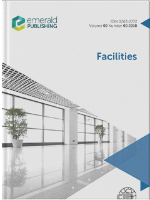
Facilities
Scope & Guideline
Elevating research in architecture and human factors for over four decades.
Introduction
Aims and Scopes
- Sustainable Facilities Management:
Research focused on developing and implementing sustainable practices in facilities management, including energy efficiency, waste management, and environmental impact assessments. - User Experience and Accessibility:
Studies examining how physical spaces affect user experience, particularly in terms of accessibility for diverse populations including students with disabilities and healthcare environments. - Technological Integration in FM:
Exploration of the role of technology, such as Building Information Modeling (BIM), automation, and smart tools, in enhancing facilities management practices. - Health and Safety in Facilities:
Investigations into the health and safety implications of facility design and management, particularly in healthcare settings and public spaces. - Maintenance and Rehabilitation Strategies:
Research on maintenance practices, deferred maintenance impacts, and rehabilitation strategies to optimize facility performance and longevity. - Design and Space Utilization:
Focus on the impact of design and spatial configuration on user behavior, productivity, and overall satisfaction within various facilities.
Trending and Emerging
- Post-Pandemic Facility Design:
Research focusing on redesigning facilities to enhance safety and well-being in the wake of the COVID-19 pandemic is on the rise, emphasizing the need for adaptable spaces that promote health. - Smart Building Technologies:
There is an increasing focus on smart building technologies and their integration into facilities management, exploring how data analytics and automation can optimize building performance. - Equity and Accessibility in Facility Design:
Emerging themes around equity in facility design highlight the importance of accessibility for all users, particularly marginalized groups, in creating inclusive environments. - Community and Social Sustainability:
Research is increasingly centered on the role of facilities in promoting community engagement and social sustainability, exploring how built environments can foster social interactions. - Impact of Indoor Environmental Quality (IEQ):
There is a growing emphasis on the impact of indoor environmental quality on occupant health and productivity, with studies exploring factors such as air quality, acoustics, and lighting.
Declining or Waning
- Traditional Facilities Management Practices:
The focus on traditional facilities management practices is decreasing, as there is a growing emphasis on innovation, technology integration, and sustainability in facility operations. - Single-Factor Studies:
Research that examines facilities management from a singular perspective, without considering the interdisciplinary nature of the field, is becoming less prominent as more comprehensive, multifactorial studies gain traction. - Static Facility Design:
The exploration of static or unchanging facility designs is waning, with a shift towards adaptable and flexible designs that can respond to changing user needs and environmental conditions. - Conventional Maintenance Approaches:
Conventional maintenance strategies are being overshadowed by more advanced, predictive maintenance models that leverage data and technology for improved efficiency and effectiveness. - Local Case Studies:
While case studies are still valuable, there is a decrease in the focus on localized studies without broader implications or applications, as researchers are increasingly looking for more global perspectives.
Similar Journals
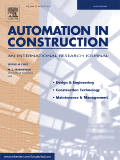
AUTOMATION IN CONSTRUCTION
Driving Efficiency and Innovation in the Construction IndustryAUTOMATION IN CONSTRUCTION is a premier academic journal published by Elsevier, dedicated to advancing the fields of Building and Construction, Civil and Structural Engineering, and Control and Systems Engineering. Since its inception in 1992, this journal has served as a vital platform for disseminating innovative research and practical applications in automation technologies within the construction industry. With a distinguished 2023 impact factor reflected in its Q1 ranking across multiple engineering categories—securing rank #3 in Civil and Structural Engineering and rank #3 in Building and Construction—AUTOMATION IN CONSTRUCTION stands out as a leading resource for researchers, professionals, and students keen on staying at the forefront of this rapidly evolving field. The journal offers access to cutting-edge studies that explore automation processes, methodologies, and tools, contributing to the enhancement of productivity and sustainability in construction practices. With contributions from global experts, each issue of AUTOMATION IN CONSTRUCTION provides comprehensive insights that help drive innovation and foster collaboration.
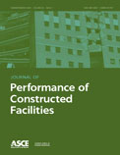
JOURNAL OF PERFORMANCE OF CONSTRUCTED FACILITIES
Advancing the Standards of Civil Infrastructure PerformanceJOURNAL OF PERFORMANCE OF CONSTRUCTED FACILITIES, published by the ASCE-AMERICAN SOCIETY OF CIVIL ENGINEERS, is a leading peer-reviewed journal dedicated to the field of civil engineering with a strong emphasis on the performance assessment and sustainability of constructed facilities. Established in 1987 and converging through 2024, this journal has garnered a solid reputation with an impressive Q2 quartile ranking across key areas including Building and Construction, Civil and Structural Engineering, and Safety, Risk, Reliability and Quality. The journal's Scopus rankings further underline its significance, being positioned within the top percentiles of these domains. As it aims to publish innovative research, case studies, and reviews, the journal serves as a vital resource for professionals and academics who are keen on advancing their understanding of the complexities associated with the performance and reliability of civil infrastructure. Researchers and practitioners interested in the latest advancements in construction performance can greatly benefit from the insights and findings published in this esteemed journal.

Engineering Reports
Championing impactful research in engineering and computer science.Engineering Reports is a premier open-access journal published by Wiley, dedicated to advancing the fields of Engineering and Computer Science. Since its inception in 2019, this journal has rapidly gained recognition, achieving a commendable Q2 ranking in both the engineering and computer science categories in 2023, evidencing its impactful contributions to the scientific community. With an impressive Scopus rank of #70/307 in General Engineering and #63/232 in General Computer Science, the journal is well-positioned to disseminate cutting-edge research and foster innovation. Researchers, professionals, and students will find value in its comprehensive scope, which includes emerging technologies and interdisciplinary studies, making it an essential resource for anyone involved in these dynamic fields. Accessible online, Engineering Reports aims to bridge the gap between complex engineering theories and practical applications, enhancing collaboration and knowledge sharing globally.

Journal of Ambient Intelligence and Smart Environments
Innovating Tomorrow's Intelligent Environments.Journal of Ambient Intelligence and Smart Environments is a premier publication dedicated to advancing the interdisciplinary field of ambient intelligence and smart environments. Published by IOS PRESS in the Netherlands, this journal focuses on innovative applications of technology in everyday environments, promoting research that intersects computer science and human-centric design. With an ISSN of 1876-1364 and an E-ISSN of 1876-1372, it serves as a critical platform for disseminating high-quality research findings from 2009 to 2024. Despite holding a Scopus rank of #199 out of 407 in the Computer Science - Software category, placing it in the 51st percentile, the journal has consistently contributed valuable insights into the development of intelligent systems that enhance user experiences. Although currently not an open access journal, it remains an essential resource for researchers, professionals, and students aiming to explore the latest trends and outcomes in smart technology and environments, further fostering collaboration across disciplines and enhancing academic dialogue.

Journal of Transportation Engineering Part B-Pavements
Championing Sustainable Practices in Pavement EngineeringJournal of Transportation Engineering Part B-Pavements, published by the ASCE-American Society of Civil Engineers, serves as a vital resource in the field of civil and structural engineering, specifically focusing on the innovative and sustainable design of pavements. With an impact factor reflecting its importance, this journal provides a platform for researchers, practitioners, and students to disseminate and access cutting-edge research from 2017 through 2024. As part of the Q2 category in both Civil and Structural Engineering and Transportation for 2023, it underscores its influence in advancing the knowledge surrounding pavement engineering. The journal embraces a commitment to exploring a multitude of topics, including pavement durability, material innovations, and sustainable practices, while promoting open access to ensure wider dissemination of knowledge in the United States and beyond. With a vision to foster collaboration and propel advancements in transportation infrastructure, the Journal of Transportation Engineering Part B-Pavements is poised to shape the future of pavement research.
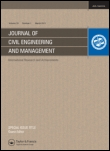
Journal of Civil Engineering and Management
Innovating the future of construction and strategic leadership.Journal of Civil Engineering and Management, published by Vilnius Gediminas Technical University in Lithuania, is a prominent open access journal dedicated to the dissemination of cutting-edge research in both civil and structural engineering as well as strategic management. With the ISSN 1392-3730 and E-ISSN 1822-3605, this journal has been an essential resource for academics and industry professionals since its inception in 2002 and has continued through to 2024. Recognized for its high-quality publications, it ranks in the Q2 quartile in both the fields of Civil and Structural Engineering and Strategy and Management, reflecting its significant impact in the academic community with a Scopus ranking of #75 out of 379 and #121 out of 478 respectively. The journal embraces an open-access model, promoting wider distribution and accessibility of knowledge to foster innovation and collaborative advancements in construction practices and management strategies. It serves as a vital platform for researchers, professionals, and students looking to contribute to and stay informed about the latest developments in these dynamic fields.

Scientific Journal of Silesian University of Technology-Series Transport
Empowering knowledge sharing in the realm of transport.Scientific Journal of Silesian University of Technology-Series Transport is an esteemed academic platform dedicated to the field of transport engineering, published by FAC TRANSPORT SILESIAN UNIV TECHNOLOGY. Established as an Open Access journal since 2008, it ensures wide dissemination and accessibility of research findings to foster knowledge sharing within the global community. With an ISSN of 0209-3324 and an E-ISSN of 2450-1549, this journal plays a critical role in advancing interdisciplinary discussions in applied Aerospace, Automotive, Civil and Structural, and Mechanical Engineering. Currently classified in Q4 across various engineering subfields according to 2023 metrics, it provides a platform for emerging research and insights into transport systems. Despite its recent establishment, the journal demonstrates growing visibility, contributing to a range of social science discussions in transportation with a Scopus percentile ranking of 18th. Researchers, professionals, and students will find valuable knowledge and innovative approaches in its pages, as it bridges theoretical and practical aspects of transport engineering.
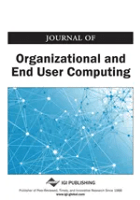
Journal of Organizational and End User Computing
Unveiling the Future of Computing in Organizational ContextsThe Journal of Organizational and End User Computing, published by IGI Global, is a leading peer-reviewed outlet dedicated to exploring the intersection of organizational practices and user interfaces within the digital realm. With a robust ISSN of 1546-2234 and an E-ISSN of 1546-5012, the journal has established itself as a crucial resource for scholars and practitioners in the fields of Computer Science Applications, Human-Computer Interaction, and Strategy and Management. Recognized for its quality, the journal attained Q3 status in Computer Science Applications and Human-Computer Interaction, and Q2 status in Strategy and Management in 2023, reflecting its esteemed position in academic rankings. Operating from the heart of the United States, the journal has converged its focus from 2004 to 2024, making it a reliable source for cutting-edge research and industry trends. Although it does not offer open access, the Journal of Organizational and End User Computing remains an invaluable repository of knowledge, perfect for researchers, professionals, and students seeking to advance their understanding of organizational structures and user engagement in computing environments.

WasserWirtschaft
Pioneering research in water technology and sustainability.WasserWirtschaft is a renowned academic journal dedicated to the critical field of water science and technology. Published by SPRINGER VIEWEG-SPRINGER FACHMEDIEN WIESBADEN GMBH, this journal has been a vital resource for researchers, professionals, and students since its inception in 1973, covering an extensive range of topics pertinent to water management, engineering, and environmental sustainability. Although it is currently ranked in the Q4 category of the Water Science and Technology category as per the 2023 Scopus metrics, with a ranking of #246 out of 261, the journal is committed to enhancing the discourse surrounding water resource management through high-quality, peer-reviewed articles. The journal does not operate on an Open Access basis, ensuring that its content is curated and accessible to subscribers while promoting rigorous academic standards. With its historical significance and focus on contemporary water-related challenges, WasserWirtschaft remains an essential publication for stakeholders aiming to advance the science and technology of water resources in a rapidly changing world.
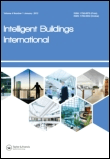
Intelligent Buildings International
Pioneering the Future of Smart Building TechnologiesIntelligent Buildings International, published by Taylor & Francis Ltd, is a premier journal dedicated to advancing knowledge in the interdisciplinary domains of building construction, civil engineering, computer science applications, and planning. Since its inception in 2009, this journal has become a vital resource for researchers, professionals, and students, offering a platform for high-quality scholarly articles that explore innovative strategies and technologies in intelligent building design and efficiencies. With its significant impact factor reflected in its Q2 and Q3 quartile rankings across various related fields, and strong Scopus rankings placing it among the top journals in Geography, Building, and Civil Engineering, Intelligent Buildings International stands out for its commitment to fostering research that enhances the sustainability and functionality of contemporary architectural practices. Readers can access a wealth of articles that illuminate the complexities of smart building technologies and their implications for future construction practices, making it an essential addition to any academic library.